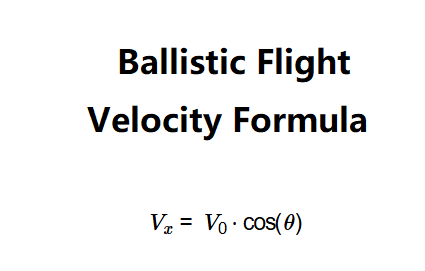 Home
Home
 Back
Back

Definition: This calculator determines the horizontal velocity (\( V_x \)) of a projectile in ballistic flight based on its initial velocity (\( V_0 \)) and launch angle (\( \theta \)).
Purpose: It assists physicists and engineers in analyzing the horizontal component of a projectile's motion.
The calculator uses the relationship:
Where:
Explanation: Enter the initial velocity and launch angle in the chosen units, and the calculator computes the horizontal velocity. Results use scientific notation (5 decimal places) if the velocity in meters/second is greater than 10000 or less than 0.00001, otherwise 2 decimal places. The image does not provide sample inputs or outputs, so default values are used for testing.
Details: Horizontal velocity is crucial for understanding the range and stability of a projectile in flight, used in ballistics and aerospace.
Tips: Enter positive values for initial velocity and angle, then click "Calculate." Results show the horizontal velocity in meters/second, feet/second, meters/minute, feet/minute, miles/hour, and kilometers/hour (scientific notation with 5 decimal places if > 10000 or < 0.00001 m/s, otherwise 2 decimal places).